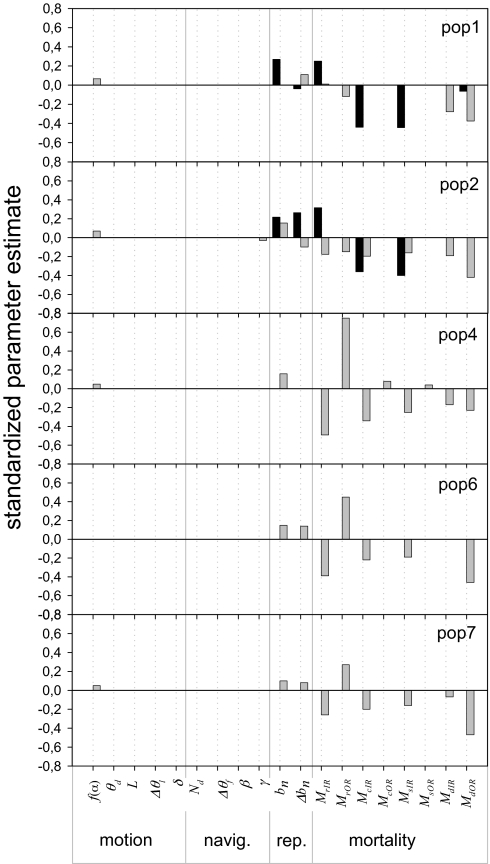Fig. 2.
Sensitivity analysis of the effect of simulation parameters on yearly per capita emigration (E) and immigration (I) rates for each local population. Populations 1 and 2 (pop1 and pop2) are sources located inside a reserve; the rest are sinks. To compare the relative impact of the different simulation parameters on E and I, we obtained the standardized parameter estimates for E (black bars) and I (gray bars) from a statistical description using the parameters of the simulation model as independent variables. We excluded poor statistical models (adj r2 < 0.4, corresponding with population 3, and E from sinks; for all of the plots 0.41〈adj r2 < 0.75). We show only significant parameter estimates. Motion parameters: f(α), average number of steps per day; θd, autocorrelation in dispersal habitat; L, long-distance displacement threshold; Δθl, increase in autocorrelation in long-distance displacements; δ, bimodal distribution of turning angles. Navigation (Navig.): Nd, fragmentation threshold; Δθf, increase in autocorrelation in fragmented areas; β, avoidance of open habitat; γ, probability to return to dispersal habitat. Reproduction (Rep.): bn, probability of reproduction; Δbn, increase in reproduction probability. Mortality: MrIR, mortality of residents inside the reserve; MrOR, mortality of residents outside the reserve; McIR, mortality of cubs inside the reserve; McOR, mortality of cubs outside the reserve; MsIR, mortality of subadults inside the reserve; MsOR, mortality of subadults outside the reserve; MdIR, mortality of dispersers inside the reserve; MdOR, mortality of dispersers outside the reserve.

